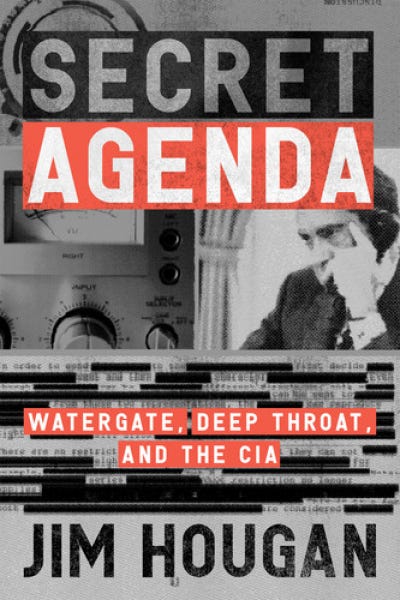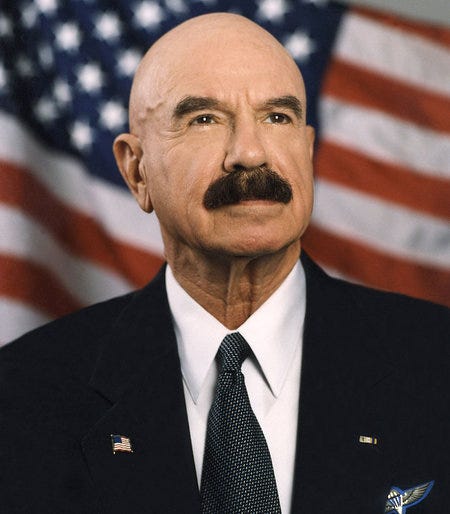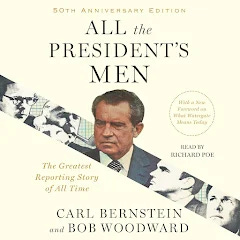In 1984, Jim Hougan published Secret Agenda: Watergate, Deep Throat, and the CIA. In a column in RealClearPolitics, reporter James Rosen concludes that after 50 years of vetting the evidence and tracking down the leads,
Secret Agenda and its progeny force us, instead, to conceive of Watergate as a Cold War-era power struggle between a duly elected president and the national security state, with Nixon as much a victim in the affair as he was a perpetrator.
Secret Agenda, Rosen concludes, has not only stood the test of time, but “it is now impossible to reckon with Watergate, even after the release of thousands more tapes and documents, without reference to Hougan.” It is important to grasp that Hougan used the Freedom of Information Act to gain access to over 30,000 previously unseen gubment documents. Among those—-keep this in mind—-were the “shift logs” of the General Security Services and the intelligence reports of the Washington, D.C. Metropolitan police that identified the Watergate complex as a “prime source” of business for hookers in the area.
What did Hough find?
First, E. Howard Hunt and James McCord, contrary to the accepted story, G. Gordon Liddy did not introduce the two in 1972, but in fact the pair had known each other for years. Testimony of a landlord, Miriam Furbershaw to the FBI, revealed that the two were not only meeting at the apartment she rented to McCord, but that they had set up an extensive bugging system in the apartment as early as 1970 at least. Even more damning, FBI interviews of Enrique Ruiz-Williams, a Bay of Pigs veteran, said that both Hunt and McCord, who were in the CIA at the time, were running him and he had “numerous” conversations with each. For those of you who are historically challenged, that would be in 1961! Equally shocking, both men told Ruiz-Williams to call them by the alias “Don Eduardo,” a rather incredible lapse of protocol . . . except they used it during Watergate, adding further validity to Hougan’s findings.
Even more astounding, in 1969, just before Hunt retired from the CIA in 1970, he had been reprimanded for leaving a classified safe open. His supervisor who received the written admonition? James McCord. As if that wasn’t enough, McCord helped investigate Hunt a second time in 1970 when questions about Hunt’s book, Give Us This Day surfaced. And yet a third confirmation came from FBI agent Alfred Baldwin, who was hired to oversee the wiretaps, concluded Hunt and McCord, whom he saw together, knew each other prior to Watergate.
Second, the camera used in the break-in of psychiatrist Daniel Ellsberg’s office, was pre-loaded by the CIA. The entire object had to be returned to the CIA. We never saw it again.” Moreover, Eugenio Rolando Martinez, one of the Cubans, was on the CIA payroll at the time of the break-in. Just a coincidence, right?
In evidence that corroborated the later, 1992 book Silent Coup by Len Colodny and Robert Gettlin, the primary target in DNC headquarters was the desk of Ida “Maxie” Wells, a mere secretary to R. Spencer Oliver Jr., the executive director of the Association of State Democratic Chairmen. Huh? A secretary? It turns out that her phone was the locus of the primary bug. But why? More on that in a moment.
However, what makes the involvement of Eugenio Martinez so captivating, as Rosen shows, was the lengths to which the CIA went to conceal Martinez’s name. As late as a 2017 lawsuit by Judicial Watch, the CIA had kept Martinez out of the conversation. But it appears in 1973, the Agency refused to turn over documents with his name included to the Watergate Special Prosecution Force. Rosen details still other evidence that Martinez was a spook before and during Watergate.
Third, Hougan’s interviews revealed that the CIA had access (!!!) to Nixon’s White House taping system for two years, from 1971-73. Long before the modern Deep State and Donald Trump, the CIA was snooping on a sitting president.
Fourth, Hougan found that the DNC in the spring of 1972 was itself engaged in criminal conduct, according to Rosen. This was the planting of the bug the DemoKKKrats and the Watergate Committee accused the Plumbers of planting. Except the DemoKKKrats didn’t plant it til three months after the bugging suspects has been arrested, a crime that would have certainly set free Liddy and the rest. This also, in a just world, would have triggered an investigation of not only the DNC/DemoKKKrats, but also the CIA and its involvement.
Here is where the books Silent Coup and Secret Agenda join up to produce damning evidence against Nixon’s White House Counsel John Dean. As Rosen wrote
Secret Agenda had established a link between the Columbia Plaza call-girl ring and the Democratic National Committee, Silent Coup went a step further and asserted a link between Columbia Plaza and White House Counsel John Dean, a central figure in Watergate.
So this Maureen Dean (then named Biner) connection to Watergate was all nonsense, right? Well, no. In 1992 in Dean v. St. Martin’s Press, which was settled out of court, nothing about John Dean’s involvement or Maureen Biner Dean’s name in the call girl books was ever retracted. Equally important, in the deposition testimony in 1995, Dean recanted much of his own book, Blind Ambition, that had become canon for Watergate historians. Oops. Ooh, and Maureen biner was linked to the Columbia call girl ring. Double oops.
What followed was an incredible trail of lawsuits and dismissals. First, in 1997 Ida Wells sued Liddy (Wells v. Liddy) claiming he had defamed her. (This suit occurred during the stretched out St. Martin’s case). A year later, in a federal court, Judge Frederick Motz dismissed the case. He found “sufficient pieces of evidence … that can arguably be viewed as corroborating … that Wells provided a connection for [the Columbia Plaza ring] at the DNC.” She appealed, and the Fourth Circuit overturned Motz’s dismissal and remanded the case for trial, arguing in the process that Wells was not a public figure, thereby setting the bar for defamation much lower—-to only negligence, not malice. In a 2001 trial in Motz’s courtroom, a jury informed the judge it could not reach a verdict (but that seven of the nine jurors sided with Liddy).
Motz dismissed the case again, finding “a reasonable person … would think that one of the purposes [of the Watergate operation] was to get embarrassing sexual information about the Democrats.” But Wells appealed back to the Fourth Circuit, who again remanded the case for a new trial but this time with an astonishing comment that “this evidence tends to corroborate the call-girl theory generally.” In the rematch between Wells and Liddy (Wells v. Liddy II the jury found for Liddy. But John Rudy, the former federal prosecutor who investigated the Columbia Plaza call girl ring, testified that his team had developed credible evidence showing that “employees [at the DNC] were assisting in getting the Democrats connected with the prostitutes at the Columbia Plaza.” The court proceedings also revealed that Spencer Oliver—-remember him?—-had told his secretary that in the summer of 1972, when a grand jury had begun investigating the break in, that she might be called as a witness over “dirt that had been covered there through the phone books.” Oh, cool. You mean Maureen Biner’s name, and that of call girls that the DemoKKKrats apparently were running through their HQ? That was the first mention in all the legal proceedings of “phone books.”
Rosen concludes his amazing tour-de-force that vindicates Hougan with an admission that one final piece of evidence remains missing: where was the original wiretap in Olver/Wells’s desk that was not found by law enforcement and the FBI in their subsequent sweeps? Rosen and Hougan both agree this evidence is missing. But the overwhelming preponderance of other evidence now supports exactly the opposite of what the boobtubers Bob Woodward and Carl Bernstein claimed in their official coverup book, All the President’s Men (1976).
In short, Rosen’s masterful review of events post-publication to Secret Agenda makes it abundantly clear that 1) there was a CIA-linked breakin of the DNC; 2) John Dean had some role, whether primary or secondary, focused on trying to extricate the name of Maureen Biner (Dean) from the call girl phone books; 3) the DemoKKKrats were every bit as dirty, if not more, than the Nixon White House, and 4) taken together, Nixon’s removal was absolutely the result of a “silent coup” by the Deep State.
Larry Schweikart
Rock drummer
Film maker
NYTimes #1 bestselling author
Political pundit
For even more truth-based current events, politics, and history content + resources, check out my VIP membership below
https://www.wildworldofhistory.com/vip









Excellent, Larry. Somewhere, a last word, final record is being created.
I never trusted John Dean, a very oily individual
Most of the big guns have gone to the back room above, it would be nice if their reps could be restored